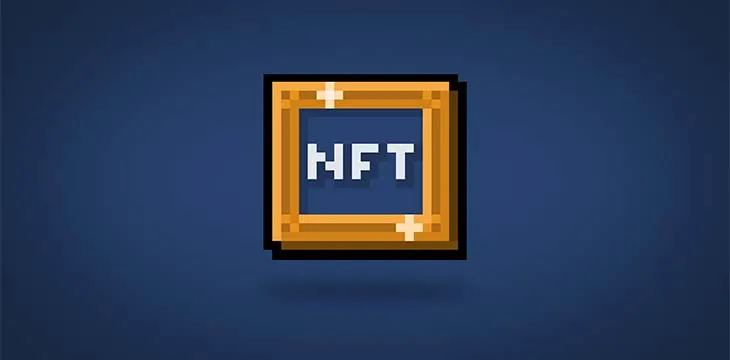|
Getting your Trinity Audio player ready...
|
This week, let’s talk about NFT games, as we have seen a surge in many games that utilize tokens in recent years, gaining some massive levels of interest. In fact, you can’t really talk about blockchain applications without acknowledging that games seem to be the most dominant applications being built these days, as the past fads of DAOs, Token swappers, and DeFi projects for their own sake have thankfully largely waned out of public interest. Nowadays, it’s much more appealing to wrap up the DAOs, Token swaps, and DeFI (DTDs) products under the guise of a game so that it gives some reason and meaning for the platform instead of being just a “tool for tooling sake.”
Of course, if we want to be completely honest, when you look at most DTDs of the past, they were really tools promoted as a means of speculation. Built specifically to exploit a market already addicted to the adrenaline high of quick monster ROIs. But like every addictive drug, dependency kicks in, and they have to keep changing the gimmick and constantly evolve something ‘new’ to continually sell the speculation junkies, which are, unfortunately, the majority of the people who consider themselves the “common cryptocurrency enthusiast.”
Like gambling and other drug addicts, the speculation junkies are always out for a new form of ‘hit,’ and the only way the astronomical return numbers (sometimes over 1000%) can be attained is that there must always be a constant rotation of “hot new” projects. A new bandwagon that the winners of the previous round and newcomers of the present can jump onto before the masses get smart to keep the perpetual cycle in motion.
The problem is that the public is starting to catch on, and successively each iteration, the average ‘Joe Noob’ is becoming more inquisitive and questioning.
What started with just the concept of an ICO (an initial coin offering to mimic the traditional initial public offering in equities) being enough to attract speculators, buyers, and users1 has become successively more and more complex. Each with a new level of gimmick to hold the market’s attention. From that, they moved on to DAOs, (governance), then to DeFI (finance), each stage supposedly introducing a revolution compared to its traditional field. If you, the speculator, would only ‘buy into it’ and support the project, you too could become rich. Sound familiar? Well, take it from me, having worked on Wall Street for 14 years, and through two financial crises, yeah, it certainly does sound the same.
Finally, when they were all done making poor blockchain analogs to every established institution with perceived issues and ran out of ideas. The users, always in need of the next new revolution to back, started demanding that digital currency projects they were investing in should do something useful or be something inherently entertaining in and of itself—like perhaps a game.
So here we are today, where the latest iteration of digital currency hype has led us to gaming. And in this author’s opinion the first time since the invention of blockchain and Bitcoin, we have an actual practical application that holds real potential for value generation, instead of just the same old ouroboros Ponzi of value absorption and wealth-redistribution that all the gimmicks born blockchain revolutions of the past were based on.
More specifically, the largest potential lies in eSports or skill-based games.
Skill-based games, unlike the more common grind-based or collection-based games, have substantial real-world potential because, unlike the other two types, they are resistant to the “pay-to-win” model that tends to ruin games in the long run by allowing players to buy their way to winning. But before I go on, time for a quick definition break:
Skill-based game
Is a kind of game where player skill is the primary factor in success. While time and money commitment may have some influence over the outcome, player skill, ability or strategy will generally determine the winner.
Real-world competitive sports follow this model, as do competitive card games like Poker, or blackjack, or RTS computer games, like Starcraft.
Grind-based game
Is a game where grinding away and repetitive and menial tasks generate the highest chance for reward and achievements. Rewards are given proportional to the amount of time a player commits to the game.
Examples of this include FarmVille, WoW, and most free-to-play games.
Collection-based game
Is a kind of game where the number of assets that a player can bring to the table influence the outcome of the game the most. This normally rewards players who are willing to commit the most money to the game.
Examples include all collectible card games, like Magic: The Gathering, and Pokemon.
Most NFT games today, like Axie Infinity, are a combination of Grind and Collection-based, and they balance these two aspects against each other. The idea is that when people have a lot of spare time, they grind, and when they have a lot of extra money, they pay. Players then create an economic mechanism for that time to be sold to the people who want to spend money to win (while collecting a commission). As long as there are people who don’t mind spending all day clicking the mouse, zombified at their screens, and those willing to buy their way to the top of the leaderboard, you have a market.
Game developers would call this an “economy,” but I beg to differ. Since to have an economy of any sort, there MUST be a net production of VALUE in the said economy, an in-game ‘GDP,’ if you will. It must generate a surplus of value, whether in the form of enjoyment or a sense of fulfillment in the players. If all the players in the game are simply out to earn money or spend money with the expectation of making more, it is simply a MARKET. No different than the equities and derivatives markets which are merely risk/liquidity providing institutions.
For a game to generate real value, we must have an equal balance with the SKILL component as a factor of winning. Indeed, I would argue that without this component, the game is nothing more than a complex slot machine or pachinko machine (indeed, the latter is nothing more than a real-life Grind game mixed with a slot machine). But if skill is a deciding factor, then it becomes a SPORT. And people like playing, watching, and paying to watch sports.
Unfortunately, none of the recent NFT games I have reviewed seem to have enough skill elements to qualify as a sport or even a decent game. Most are just nothing more than a casino or speculative market wrapped in a thin facade of a Collection or Grind-game. So we will have to wait and see how the industry develops.
Next time, I’ll delve into the economic models of NFT games and how they can build a token economy that is self-sustaining and can generate net value, starting with the exemplar models of Roblox and Minecraft—something that no current NFT game in the blockchain space has yet been able to achieve despite all the ‘revolutionary’ technology they claim to use.
/Jerry Chan
WallStreetTechnologist.com
***
NOTE:
[1] Here, I use ‘users’ in the same sense as ‘drug user.’
Watch: CoinGeek New York panel, Online Games: Next Level on the BSV Blockchain

 07-18-2025
07-18-2025 





